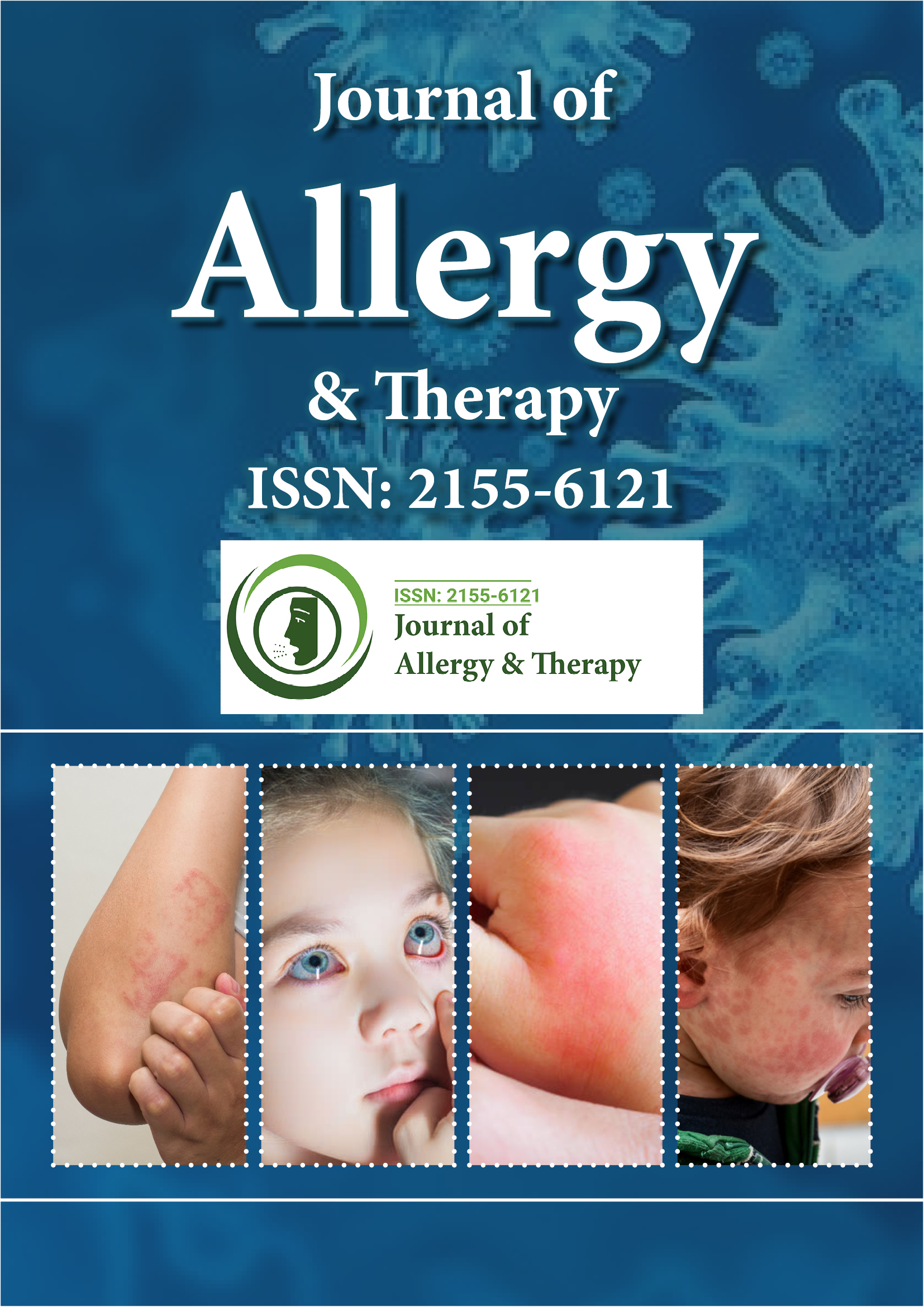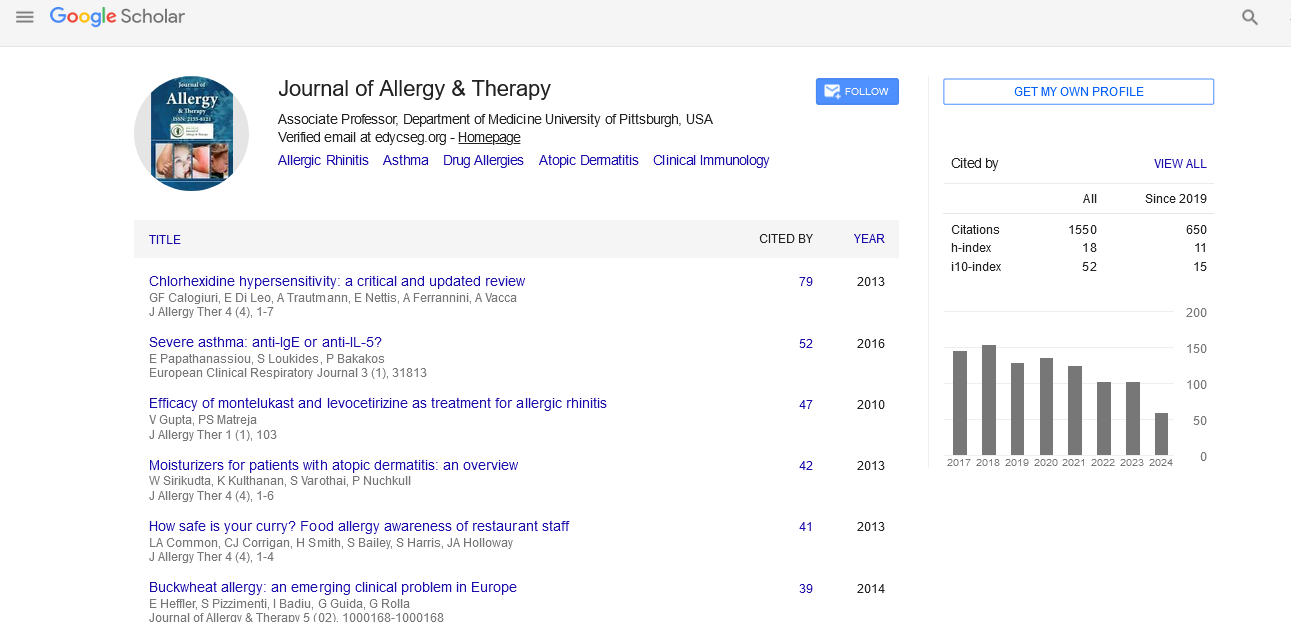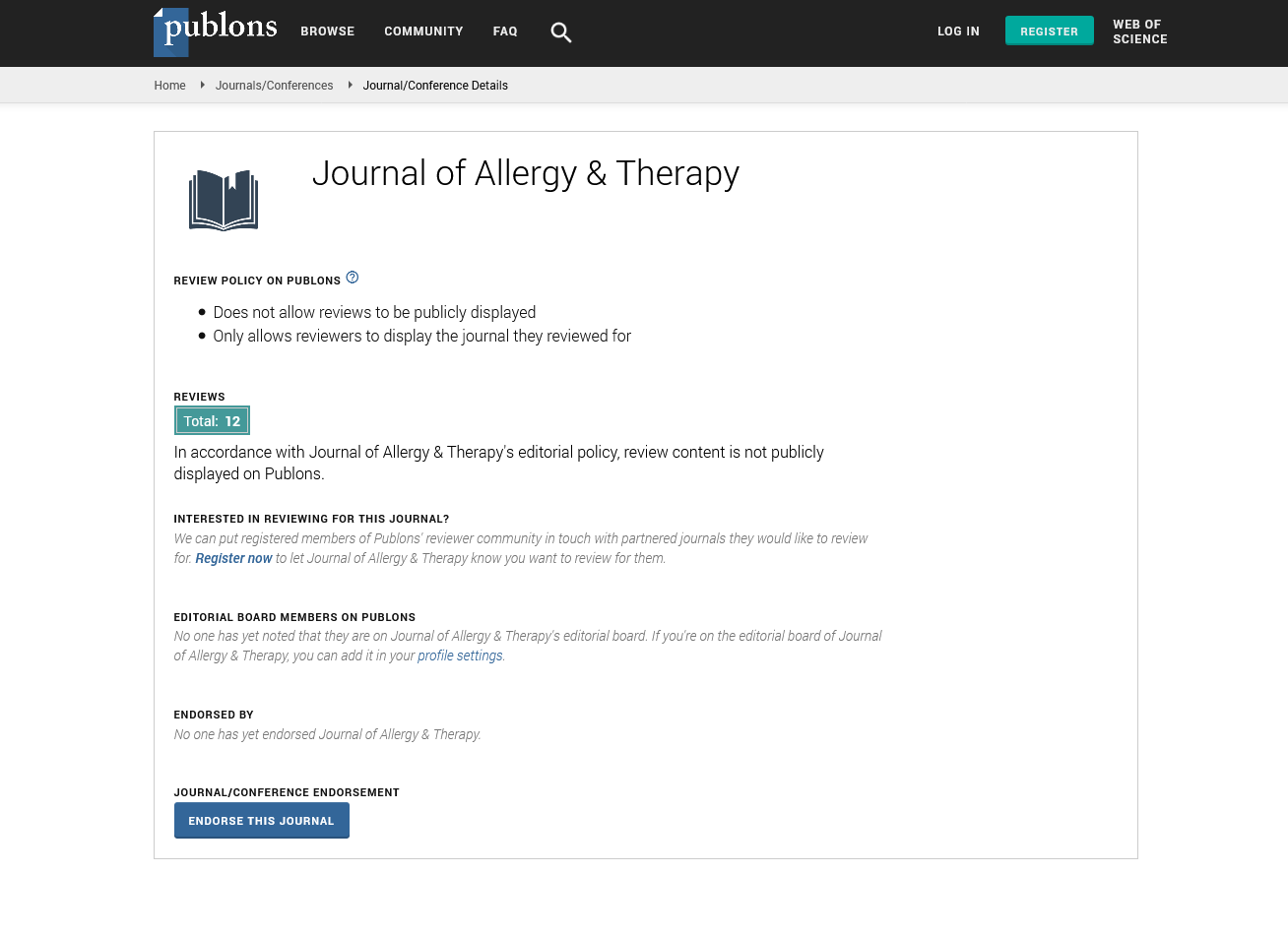Indexed In
- Academic Journals Database
- Open J Gate
- Genamics JournalSeek
- Academic Keys
- JournalTOCs
- China National Knowledge Infrastructure (CNKI)
- Ulrich's Periodicals Directory
- Electronic Journals Library
- RefSeek
- Hamdard University
- EBSCO A-Z
- OCLC- WorldCat
- SWB online catalog
- Virtual Library of Biology (vifabio)
- Publons
- Geneva Foundation for Medical Education and Research
- Euro Pub
- Google Scholar
Useful Links
Share This Page
Journal Flyer

Open Access Journals
- Agri and Aquaculture
- Biochemistry
- Bioinformatics & Systems Biology
- Business & Management
- Chemistry
- Clinical Sciences
- Engineering
- Food & Nutrition
- General Science
- Genetics & Molecular Biology
- Immunology & Microbiology
- Medical Sciences
- Neuroscience & Psychology
- Nursing & Health Care
- Pharmaceutical Sciences
Obesity enhances allergen-induced airway inflammation in murine model of Asthma
13th International Conference on Allergy and Clinical Immunology
December 13-14, 2018 Abu Dhabi, UAE
Rehab Bagadood, Cordula Stover and Yassine Amrani
University of Leicester, United Kingdom
Scientific Tracks Abstracts: J Allergy Ther
Abstract:
Introduction & Aim: Asthma is a chronic inflammatory disease of the lungs affecting millions of people worldwide. Obesity, on the other hand is considered as a low-grade systemic inflammation that affects large number of individuals. It is important to note that obesity has a significant impact on asthmatic patients as obese patients are mostly suffering from severe symptoms, frequent exacerbation, poor quality of life and poor response to anti-inflammatory therapies including corticosteroids, although the underlying mechanisms are still unknown. We here investigated whether obesity affects pro-asthmatic changes in the lung and immune cells in a murine model of allergic asthma. Methodology: Splenocytes were isolated from ovalbumin (or saline as control) sensitized and challenged C57BL/6 mice that were fed with either Low (LFD) or High-Fat (HFD) diets. These splenocytes were treated with (1 mg/ml ovalbumin) in the presence of dexamethasone and production of different cytokines was measured using ELISA. Inflammatory cytokines levels were also assessed in bronchoalveolar lavage fluids. To score the degree of inflammation and mucus secretion in the airways, mice lung sections were stained with Haematoxylin & Eosin (H&E) and Periodic Acid-Schiff (PAS) stains respectively. Results: Production of TNF? and IL-6 levels by cultured splenocytes was greater in HFD-fed ovalbumin-challenged mice (148.5±13.4 and 597.9±136.5 pg/ml; P<0.0001 and P=0.01 respectively) when compared to that in cells from LFD-fed group. Interestingly, dexamethasone failed to inhibit the production of IL-6 by splenocytes from ovalbumin-challenge HFD-fed mice compared to LFD mice. Ovalbumin-challenged obese mice exhibit significant IL-6 secretion into BALF (P<0.05). H&E and PAS stains showed high levels of inflammatory cell infiltration and mucus secretion in the airways of ovalbumin-challenged mice. More importantly, HFD significantly increased lung inflammation in various compartments including peri-vascular, peri-bronchial and parenchyma areas in ovalbumin-challenged mice. Conclusion & Significance: HFD exacerbate allergen responses in vivo and dexamethasone sensitivity in vitro in culturedsplenocytes. Obesity induced by HFD augments allergen-induced airway inflammation possibly as a consequence of increased infiltration of immune cells in the lungs and release of pro-inflammatory cytokines.
Biography :
Rehab Bagadood is a Lecturer in Immunology at Umm al-Qura University, Saudi Arabia. She has completed her Bachelor’s degree in Laboratory Medicine from Umm al-Qura University, Saudi Arabia in 2010. She later moved to University of Leicester where she earned MSc degree in Infection and Immunity in 2014. She is currently pursuing PhD at University of Leicester, UK.


